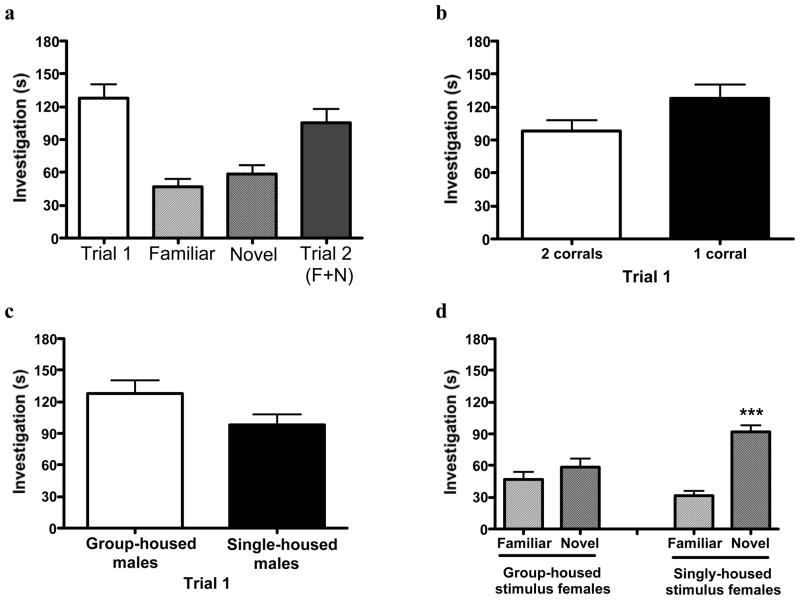Fig 2.
Results using different permutations of the social discrimination task. (a) Representative data of investigation times of corralled C57Bl/6J females by group-housed C57Bl/6J males. (b) Investigation time during Trial 1 (single female in one corral) when the empty corral remains in the test cage (left) or is removed during testing (right). (c) Investigation time during Trial 1 (single female in one corral) by group-housed and single-housed males (p = 0.06 between bars). (d) Significant discrimination occurred between “familiar” and “novel” females by group housed males only when singly-housed stimulus females were used (right); ***p < 0.001 between familiar and novel via paired-samples t-test. For all graphs, data are mean ± SEM; n = 10 per group.

